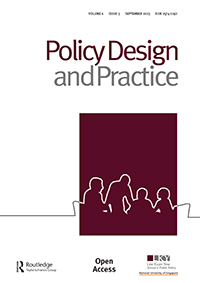Cyber-attacks and the right of self-defense: a case study of the Netherlands
IF 2.6
Q1 PUBLIC ADMINISTRATION
引用次数: 0
Abstract
Abstract Whilst Article 51 of the UN Charter as a rule indicates that an “armed attack” may trigger a State’s right of self-defense, the actual purport of armed attack remains a matter of interpretation and qualification. To improve the notion of the rule on self-defense and contribute to the jus ad bellum, more clarification as to what constitutes an armed attack in cyberspace is necessary. Therefore, policy norms—regarding when cyber-attacks reach the threshold of an armed attack—could guide State behavior. On the one hand, these policy norms could be used in the political decision-making processes for States that consider initiating cyber-attacks. On the other, they could help victim States in their decision-making processes in response to grave cyber-attacks. The aim of the paper is to propose a tangible guideline that outlines when cyber-attacks—perpetrated solely in or through cyberspace and not in conjunction with conventional military attacks—can qualify as an armed attack. By assessing the positions of States and leading academic opinions regarding the qualification of cyber-attacks as armed attacks, and applying international and interdisciplinary policy documents to transfer the legal debate into tangible options, a policy framework is deduced that can serve as a baseline for international cyber norms. This framework distinguishes three separate categories of armed attack in cyberspace, each with their own distinctive levels to determine when a cyber-attack can qualify as an armed attack. These absolute levels are tailored for the Netherlands but could also be suitable for other States when transferred to percentages of the gross national/domestic product and the population size.网络攻击与自卫权——以荷兰为例
摘要虽然《联合国宪章》第五十一条一般规定“武装攻击”可触发国家的自卫权,但武装攻击的实际意义仍然是一个解释和限定问题。为了完善自卫规则的概念,并有助于维护战争法,有必要进一步澄清网络空间中的武装攻击的构成。因此,政策规范——关于网络攻击何时达到武装攻击的阈值——可以指导国家行为。一方面,这些政策规范可用于考虑发起网络攻击的国家的政治决策过程。另一方面,它们可以帮助受害国在应对严重网络攻击的决策过程中发挥作用。该文件的目的是提出一个切实可行的指导方针,概述何时网络攻击——仅在网络空间或通过网络空间实施,而不与常规军事攻击相结合——可以被视为武装攻击。通过评估各国关于网络攻击为武装攻击资格的立场和主要学术意见,并应用国际和跨学科政策文件将法律辩论转化为切实可行的选择,推断出一个政策框架,可作为国际网络规范的基线。该框架将网络空间中的武装攻击区分为三种不同的类别,每种类别都有其独特的级别,以确定何时网络攻击可以被视为武装攻击。这些绝对水平是为荷兰量身定制的,但如果换算成国民生产总值/国内生产总值和人口规模的百分比,也可能适用于其他国家。
本文章由计算机程序翻译,如有差异,请以英文原文为准。
求助全文
约1分钟内获得全文
求助全文
来源期刊

Policy Design and Practice
PUBLIC ADMINISTRATION-
CiteScore
10.30
自引率
4.30%
发文量
19
审稿时长
13 weeks
期刊介绍:
 求助内容:
求助内容: 应助结果提醒方式:
应助结果提醒方式:


